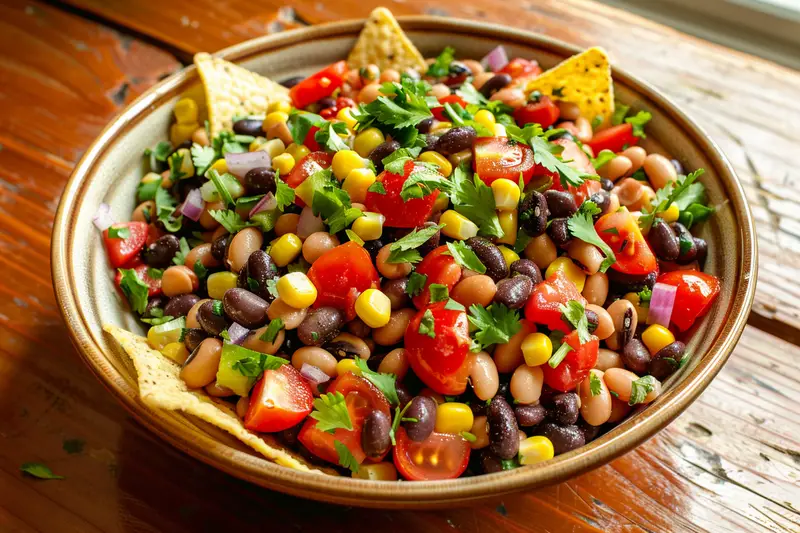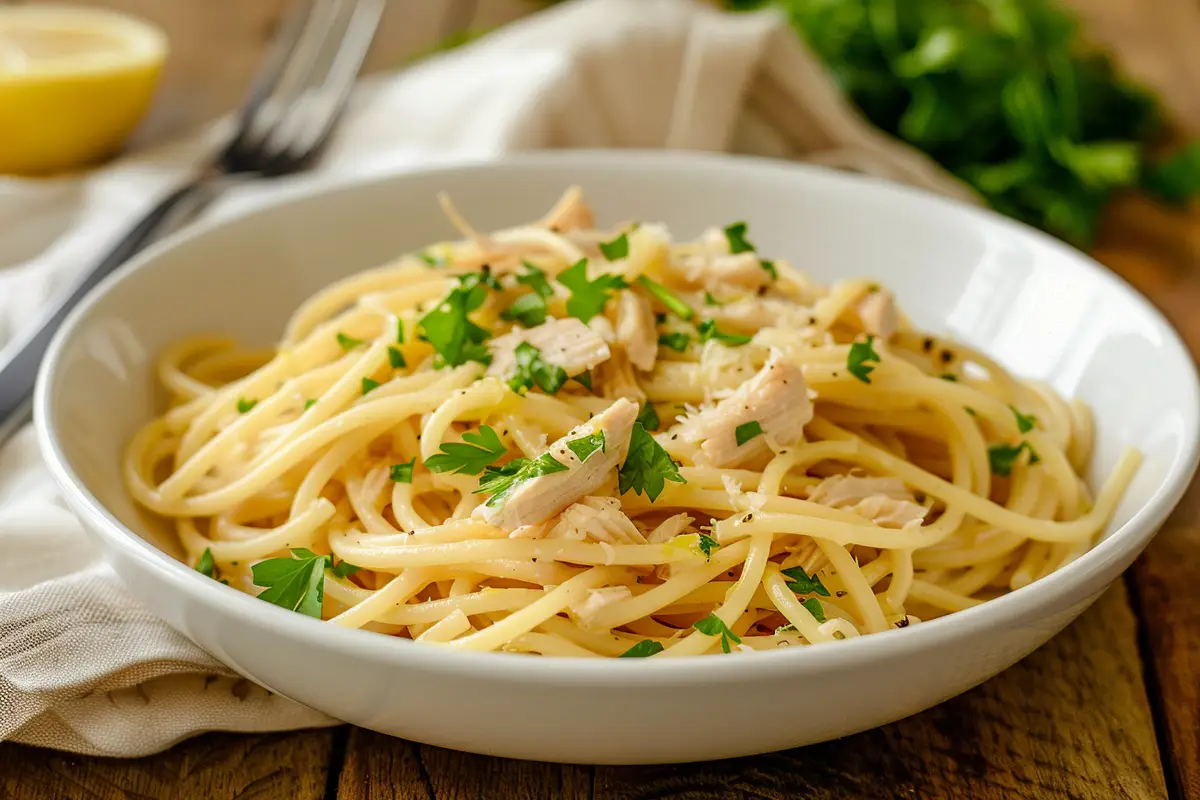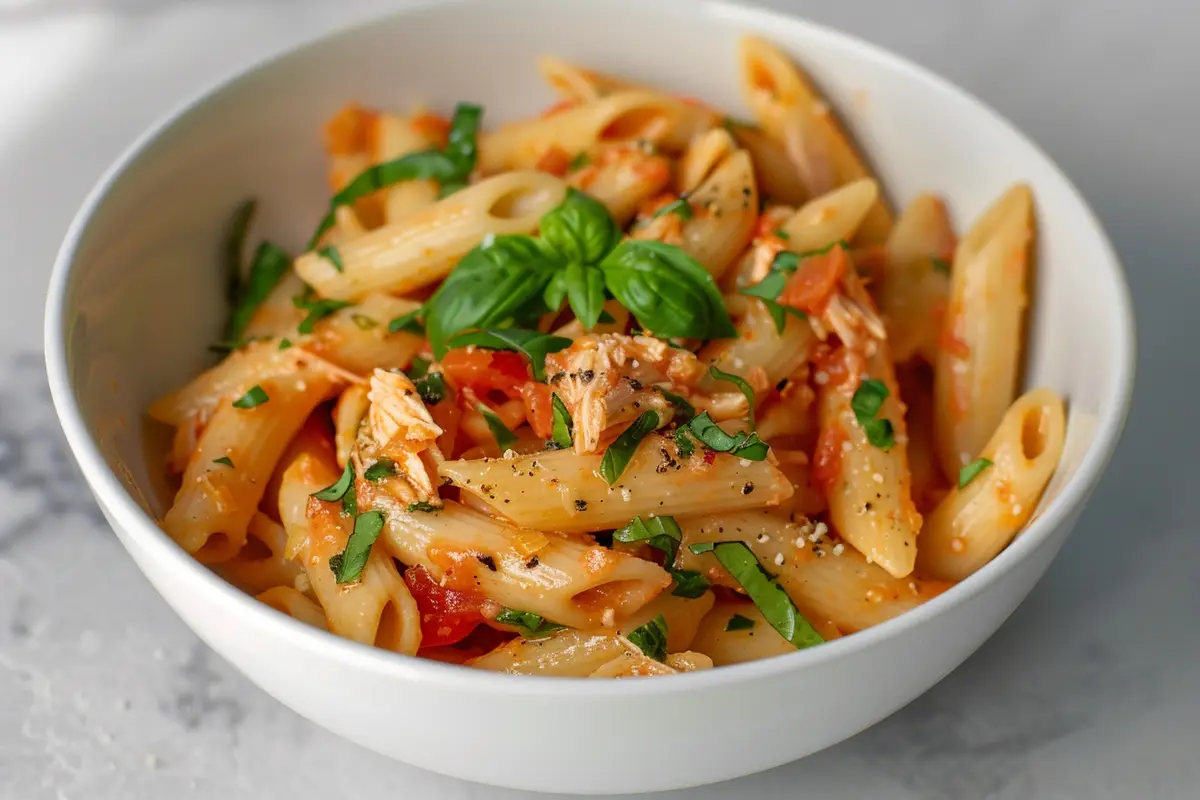Clam chowder is a dish rich in tradition and flavor, cherished by many as the perfect comfort food. Whether you’re drawn to the creamy indulgence of New England clam chowder or the robust tomato-based Manhattan variation, this article explores the best clam chowder recipes to satisfy your cravings. With tips, techniques, and ingredients, you’ll be equipped to create chowders that are not only hearty but restaurant-worthy.
Print
The Best New England & Manhattan Clam Chowder Recipes You’ll Love
- Total Time: 50 minutes
- Yield: 6 servings 1x
Description
Indulge in the comforting richness of New England Clam Chowder, a classic dish known for its creamy base and briny clams. This hearty soup combines tender clams, smoky bacon, and buttery potatoes to create the perfect bowl of warmth. Whether it’s a cozy night at home or a special gathering, this chowder is guaranteed to impress.
Ingredients
- 3 dozen fresh clams (or 3 cups canned clams)
- 2 cups clam juice or broth (from steaming clams or bottled)
- 4 slices of bacon, diced
- 1 medium onion, finely chopped
- 2 celery stalks, chopped
- 3 cups diced Yukon Gold potatoes
- 2 tablespoons all-purpose flour
- 2 cups whole milk
- 1 cup heavy cream
- 1 bay leaf
- 1 teaspoon fresh thyme leaves
- Salt and black pepper to taste
- Fresh parsley, chopped (for garnish)
- Oyster crackers or crusty bread (for serving)
Instructions
Steam the Clams
- If using fresh clams, steam them in a large pot with 1 cup of water or clam juice until they open. Remove the clams, reserve the liquid, and chop the clam meat. Strain the liquid to remove any grit.
Cook the Bacon
- In a Dutch oven, cook diced bacon until crispy. Remove with a slotted spoon and set aside for garnish. Leave the drippings in the pot.
Sauté the Aromatics
- Add onion and celery to the bacon drippings. Sauté over medium heat until softened, about 5 minutes.
Create the Base
- Sprinkle the flour over the sautéed vegetables and stir for 1-2 minutes to form a roux. Slowly pour in the reserved clam juice and milk, stirring continuously to prevent lumps.
Simmer and Season
- Add the diced potatoes, thyme, and bay leaf. Bring to a simmer and cook for 20 minutes until the potatoes are tender.
Add Clams and Cream
- Stir in the chopped clams and heavy cream. Cook for 2-3 more minutes, then remove from heat. Season with salt and pepper to taste.
Garnish and Serve
- Ladle the chowder into bowls. Garnish with crispy bacon and fresh parsley. Serve with oyster crackers or a slice of crusty bread.
Notes
- Thickening Tip: For a thicker chowder, mash some of the potatoes with a fork before adding the clams.
- Fresh Clams Alternative: Use canned clams for a quicker version while still enjoying a flavorful result.
- Storage: Store in an airtight container in the refrigerator for up to 3 days. Reheat gently on the stove to maintain the creamy texture.
- Prep Time: 20 minutes
- Cook Time: 30 minutes
- Category: chef’s choice
- Method: Soup
- Cuisine: American
Nutrition
- Serving Size: 1 cup
- Calories: 320
- Fat: ~15g
- Carbohydrates: ~28g
- Protein: ~18g
Table of Contents
What Is Clam Chowder?
Clam chowder is a beloved seafood dish with deep roots in coastal communities, celebrated for its comforting flavors and hearty texture. This classic dish has been cherished for centuries and comes in a variety of regional styles, each with its unique twist.
The two most well-known types are New England clam chowder and Manhattan clam chowder. New England clam chowder, also known as “Boston-style chowder,” is renowned for its rich and creamy base made with milk or cream. It’s filled with tender clams, potatoes, and onions, creating a dish that feels like a warm hug on a cold day.
Manhattan clam chowder, in contrast, features a tomato-based broth. This version is tangy and lighter and incorporates vegetables like carrots and celery, making it a vibrant alternative to its creamy cousin.
Whether you prefer the creamy indulgence of New England clam chowder or the zesty allure of Manhattan chowder, these recipes have something to offer every palate.
Essential Ingredients for Great Clam Chowder
Creating a great chowder begins with selecting the right ingredients. Each component plays a vital role in building layers of flavor and texture.
Fresh Clams vs. Canned Clams
Fresh clams, such as chowder clams or littlenecks, are the gold standard for chowder. They provide a robust, briny flavor that can’t be beaten. If fresh clams aren’t available, canned clams are a convenient and effective alternative, offering the same savory notes with less preparation time.
The Importance of Clam Juice
A bottle of clam juice is an essential ingredient, serving as the foundation of a flavorful broth. If you’re steaming fresh clams, the liquid they release can be reserved and used as a natural substitute for bottled clam juice.
Bacon or Salt Pork
For depth of flavor, use bacon or salt pork. The fat rendered during cooking adds a smoky richness to the chowder, while the crispy bits can be saved as a garnish for added texture.
Key Aromatics
Aromatics such as onion, celery and fresh herbs like thyme and parsley are sautéed at the beginning to create a fragrant base. These ingredients elevate the chowder from simple to sophisticated.
New England Clam Chowder Recipe: A Creamy Delight
Few dishes embody comfort food quite like New England clam chowder. This creamy, rich soup is perfect for cozy evenings or as a starter for a special meal.
Ingredients
To create this classic dish, you’ll need:
- Fresh or canned clams.
- Clam juice or broth (bottled or from steaming clams).
- Bacon or salt pork.
- Onion, celery, and Yukon gold potatoes.
- Milk or cream for richness.
- Herbs like thyme and bay leaf.
Pair your chowder with a warm loaf from our best oat molasses bread recipe Maine.

Instructions
- Steam the Clams
If using fresh clams, place them in a Dutch oven over medium heat with a cup of water or clam juice. Cover and steam until the clams open. Remove the clams, reserve the liquid, and chop the meat. - Cook the Bacon
In the same pot, cook chopped bacon or salt pork until crispy. Remove with a slotted spoon, leaving the drippings behind for flavor. - Sauté the Aromatics
Add chopped onion and celery to the bacon drippings, sautéing until softened and aromatic. This step builds a flavorful foundation for the chowder. - Create the Base
Sprinkle in flour and stir to create a roux. Slowly add the reserved clam juice or broth, stirring to avoid lumps. Incorporate milk or cream, then add diced Yukon gold potatoes. - Simmer to Perfection
Add herbs like thyme and a bay leaf. Let the chowder simmer for 20 minutes, allowing the flavors to meld and the potatoes to become tender. - Add the Clams
Stir in the chopped clams, cooking for an additional minute or two. Adjust seasoning with black pepper and garnish with crispy bacon and fresh parsley.
Serving Suggestions
Ladle the chowder into a warm bowl and serve with oyster crackers or a slice of crusty bread. For an extra touch, sprinkle with fresh parsley.
This New England clam chowder recipe is a timeless classic, guaranteed to impress at any table.
Manhattan Clam Chowder: A Tangy Twist
While New England clam chowder is rich and creamy, Manhattan clam chowder offers a lighter, tangy alternative. Its tomato-based broth is packed with vegetables and clams, making it a colorful and satisfying option for seafood lovers.
Unique Ingredients
- Fresh clams or canned clams.
- Diced tomatoes for the tomato base.
- Vegetables like onion, celery, and carrots.
- Herbs such as thyme and a bay leaf.
- Clam juice or broth for depth of flavor.
Instructions
- Prepare the Base
Start by cooking bacon or salt pork in a Dutch oven. Remove the crispy bits with a slotted spoon and reserve for garnish. Sauté chopped onion, celery, and carrots in the drippings until softened. - Build the Broth
Add diced tomatoes, clam juice, and fresh herbs like thyme and bay leaf. Stir everything together, allowing the flavors to meld. - Add Clams and Potatoes
Stir in diced potatoes (such as Yukon gold or red potatoes) and let the chowder simmer for 20 minutes until the potatoes are tender. Add the clams during the last few minutes of cooking to avoid overcooking. - Serve with Style
Ladle the chowder into bowls and garnish with reserved bacon, parsley, and a slice of crusty bread.
This tangy, vibrant chowder is a refreshing take on a seafood classic and a must-try for those who enjoy bold flavors.
Choosing the Best Clams for Chowder
The quality of your clams plays a significant role in the flavor of your chowder. Whether you’re using fresh clams or opting for canned clams, making the right choice ensures a delicious result.
Types of Clams
- Chowder Clams: Large and flavorful, perfect for classic recipes.
- Littlenecks: Smaller and tender, they work well in light chowders.
- Steamers: Sweet and versatile, ideal for steaming fresh clams.
Steaming Fresh Clams
If fresh clams are used, start by rinsing them under cold water to remove any sand or grit. Place them in a pot with a cup of water or clam juice and steam until the shells open. Remove the clams, reserve the liquid, and chop the meat. This steaming liquid makes an excellent base for your broth.
Using Canned Clams
For a quick and easy option, canned clams are a great choice. Their briny flavor adds depth, and they come pre-cooked, saving time during preparation.
How to Thicken Your Chowder Like a Pro
Achieving the perfect consistency in your chowder is key to its success. Whether you prefer a lighter texture or a thick and hearty stew, there are several ways to get it just right.
Common Thickeners
- Flour: Create a roux by combining flour with butter or bacon drippings. This mixture thickens the chowder as it cooks.
- Potatoes: Blend a portion of the cooked potatoes with a bit of broth to naturally thicken the soup without additional ingredients.
- Cornstarch: Dissolve cornstarch in cold water and add it gradually to the simmering chowder, stirring continuously.
Tips for Perfect Consistency
- Stir Occasionally: To prevent sticking or uneven thickening, stir the chowder as it simmers.
- Don’t Overdo It: A thicker soup is satisfying, but overly thick chowder can lose its balance. Add liquid if it becomes too dense.
Thickening New England vs. Manhattan Chowder
- For New England clam chowder, heavy cream or half and half can add richness while enhancing thickness.
- For Manhattan clam chowder, use potatoes or a light cornstarch slurry to maintain the broth’s bright texture.
Mastering the art of thickening ensures that your chowder is satisfying, whether it’s creamy and indulgent or light and refreshing.
Secrets to Adding Depth of Flavor
Great clam chowder is all about layers of flavor. By using the right techniques and ingredients, you can elevate your chowder to a restaurant-worthy dish.
Bacon Drippings and Herbs
Start by cooking bacon or salt pork in your pot. The rendered fat adds a smoky note to the base of the chowder. Use the drippings to sauté aromatics like onion and celery, infusing them with a rich, savory taste.
Herbs such as thyme and parsley play an essential role in brightening the dish. Adding a bay leaf while simmering the chowder introduces subtle earthy undertones.
The Power of Clam Juice
Clam juice, whether bottled or from steaming fresh clams, is a key ingredient for depth. It enhances the chowder’s seafood essence without overpowering other flavors. For an extra burst of brininess, add a bottle of clam juice or the liquid reserved from steaming clams.

Fresh Ingredients Make a Difference
Using fresh, high-quality ingredients like clams, Yukon gold potatoes, and chopped fresh herbs ensures the chowder tastes vibrant and delicious. Incorporate these elements for a dish that’s both hearty and full of flavor.
Homemade Clam Chowder Variations
While traditional recipes are timeless, adding unique touches can make your chowder stand out. Here are a few popular variations to try:
Chowder with Corn
For a sweet and savory twist, incorporate corn kernels into your chowder. Corn adds a pop of color and a subtle sweetness that complements the briny flavor of clams. This variation works beautifully in both New England and Manhattan clam chowder.
Red Potatoes vs. Yukon Gold
Swap standard potatoes for red potatoes or Yukon golds to create a creamy, buttery texture. These varieties hold their shape well during cooking, adding a pleasant bite to each spoonful.
Creative Additions
Experiment with ingredients like leeks, fennel, or even seafood like shrimp or scallops to create your own signature chowder recipe. A dash of black pepper or a smoky seasoning like paprika can also enhance the overall flavor.
These variations keep your chowder fresh and exciting while still honoring the classic recipe.
FAQs About Clam Chowder
Can You Use Canned Clams?
Absolutely! If you can’t get fresh clams, canned clams are a convenient and flavorful option. Opt for canned chopped clams for ease of use, and be sure to include the liquid from the can to enhance the broth.
How to Store and Reheat Chowder?
Store leftover chowder in an airtight container in the refrigerator for up to three days. To reheat, warm it gently on the stove over low heat, stirring occasionally to prevent scorching. Avoid boiling, as this can affect the texture of the cream and clams.
How Do You Thicken Chowder Without Flour?
If you prefer a gluten-free option, you can use cornstarch or blend a portion of the cooked potatoes with broth to thicken the chowder naturally.
What Are the Best Pairings for Clam Chowder?
Serve chowder with crusty bread, oyster crackers, or a fresh green salad. These accompaniments balance the richness of the soup and provide satisfying textures.
Quick Tips for Serving and Garnishing Chowder
Presentation plays an important role in elevating your homemade chowder to a professional level. A few thoughtful touches can make a big difference.
Pairing Suggestions
- Crusty Bread: Serve your chowder with warm, crusty bread to soak up the delicious broth. This pairing is perfect for both New England and Manhattan styles.
- Oyster Crackers: For a classic touch, garnish each bowl with a handful of oyster crackers. Their crunch complements the creamy or tomato-based chowder beautifully.
Garnishing for Flavor and Style
- Sprinkle chopped parsley over the top for a pop of color and a hint of freshness.
- Add crispy, reserved bacon for a smoky crunch.
- For Manhattan chowder, consider a swirl of olive oil or a pinch of black pepper for a refined finish.
Serving Tips
Serve your chowder in a pre-warmed bowl to retain heat longer. If you’re hosting a dinner, ladle the chowder into individual bowls and provide garnishes on the side, allowing guests to customize their servings.
With these simple serving tips, your chowder becomes more than just a dish—it’s an experience.







